Idea by
Flavio Martella, Maria Vittoria Tesei
m²ft architects
http://www.m2ft-architects.com/
Call for ideas 2020
Neon Rome
Neon Rome

- Systemic changes
Neon Rome puts the eternal city into a state between the real and the surreal. It is a graphic research project that focuses on the potential of Rome as a city that hides continuous transformations behind its mask of perennial immutability. The aesthetic of neon gives it an alienic character, which refers to an era and context that never existed in Rome and which therefore proves to be the suitable means to reveal what is invisibly hidden behind the unalterable facade of the eternal city.
The glowing signs highlight the relationship between the politics of the city and its architecture, no matter how monumental and nodal it could be. The neon represent the invisible contemporaneity of people that affects the entire perception of architecture and its role in the urban environment.
Neon Rome therefore plays with the paradox of transformation of the alleged immutability of monumental architecture in order to reveal the hidden and still intangible change behind the events taking place.
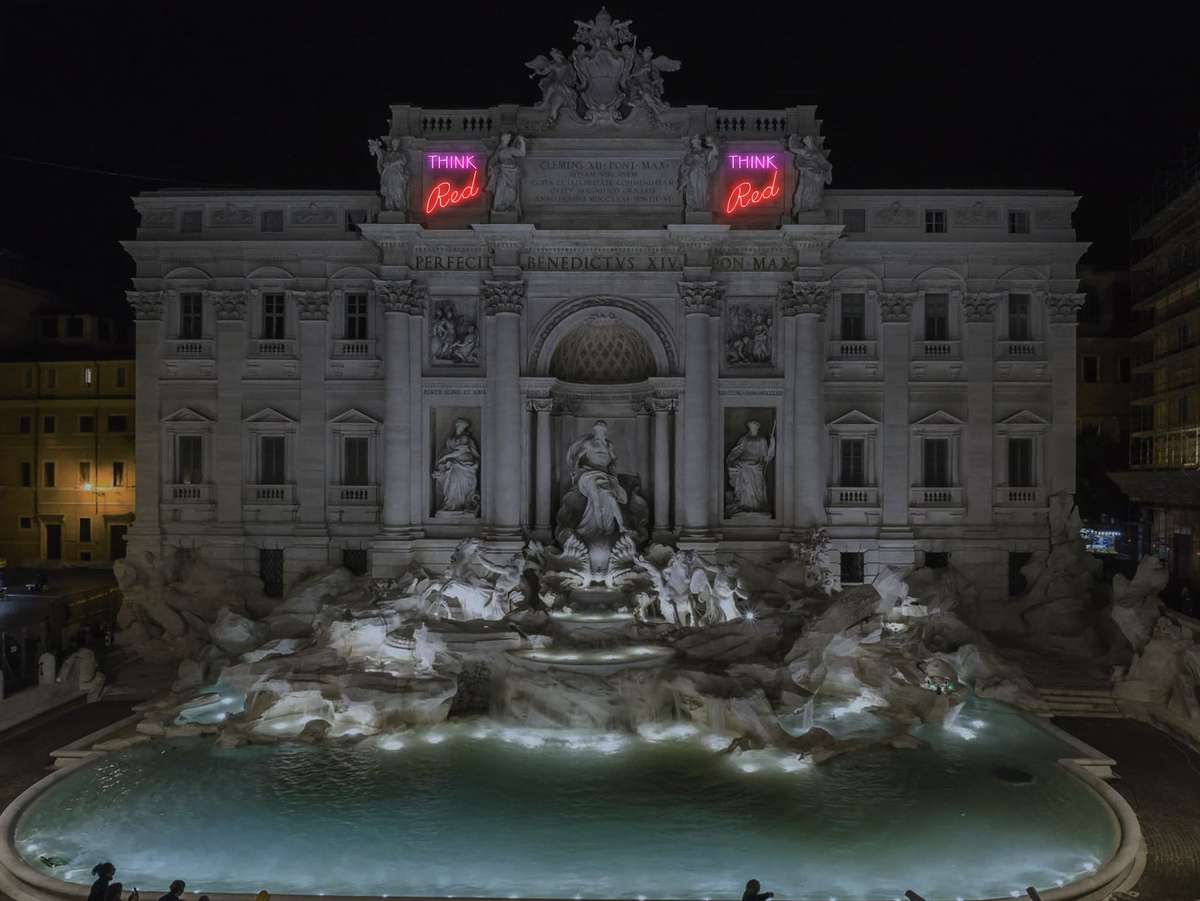
Rome, which has always been transformed with its traditional "slowness" continues to do so inexorably, and with the same inexorability continues to stimulate the population to interact with it. So here's how, in 2007 and 2017, the Trevi fountain, in an act of rebellion and madness, is tinged with red by a vandal. The fountain, given its status as a monument, stands as a symbol of the city and becomes a catalyst, radically transforming into a means of protest and communication.
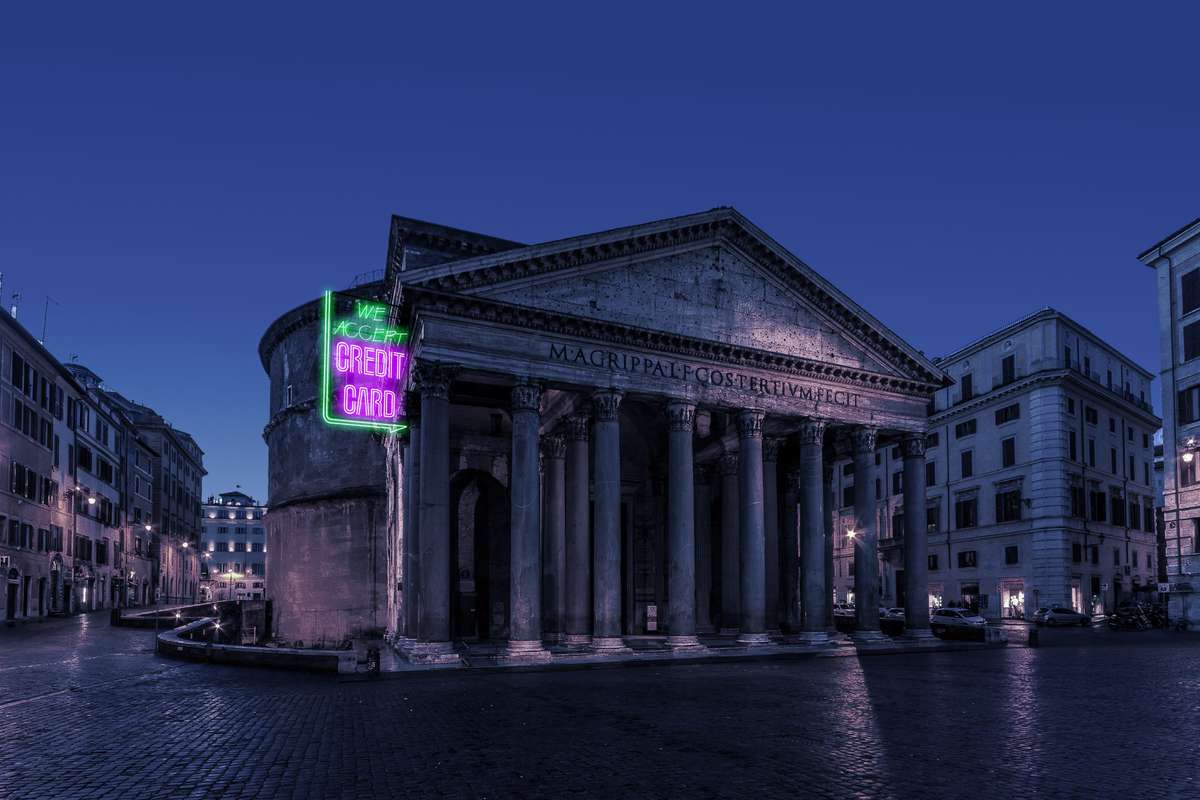
Another example of its changeable immutability was the desire to introduce a fee for the entrance of the Pantheon. This decision undermines what has defined Rome in the last 1500 years of its history. The sacredness of being the Catholic beacon of the world and therefore a place where the creed shows itself freely (and free of charge) to all pilgrims, reveals its business component.
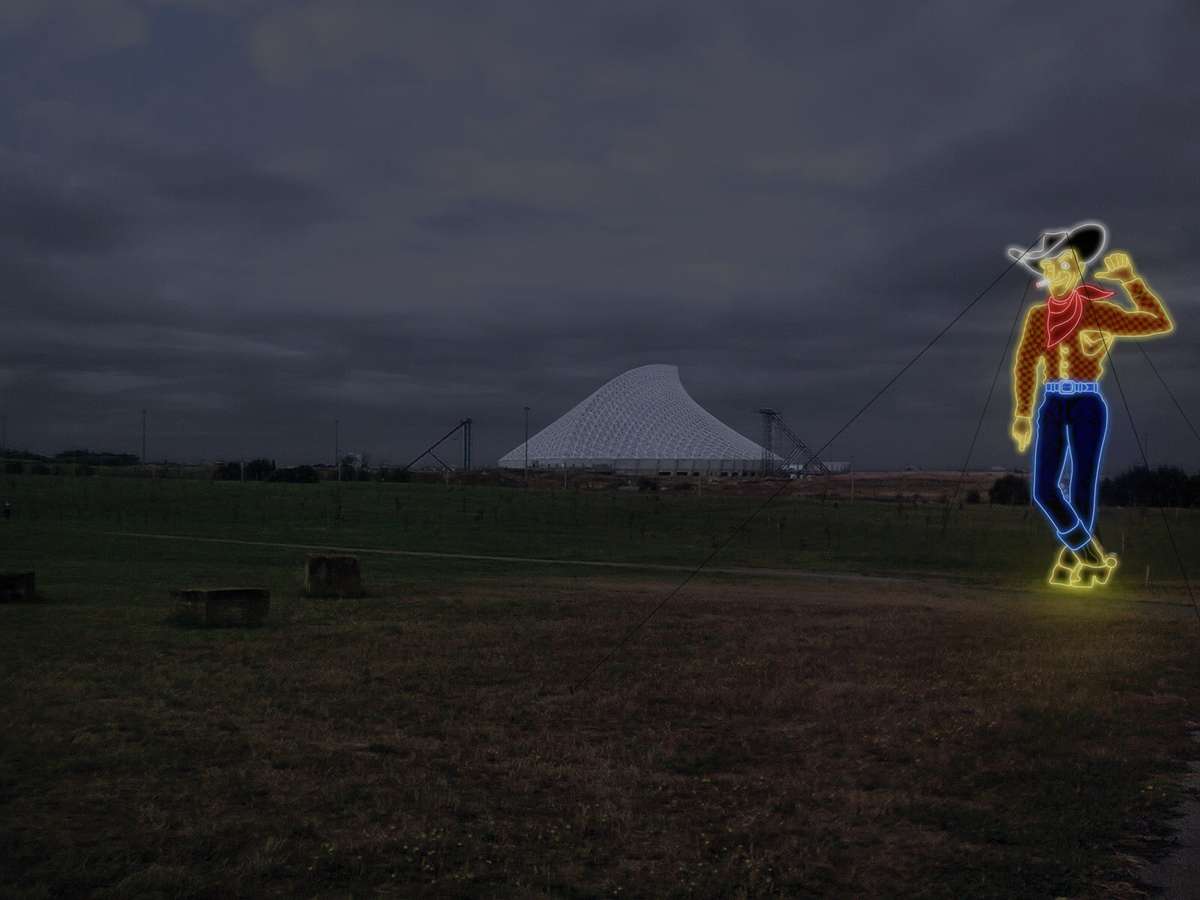
In Rome, change and transformation must be placed in a difficult context, between illustrious pre-existences and questionable needs that weaken its effective impact. A situation which, in a wider context, makes evolution difficult: this is demonstrated by the project of the City of Sport of Calatrava, which has remained unfinished, abandoned and disconnected from the rest of the city, causing a desolate atmosphere worthy of the deserts in the Roman suburbs.
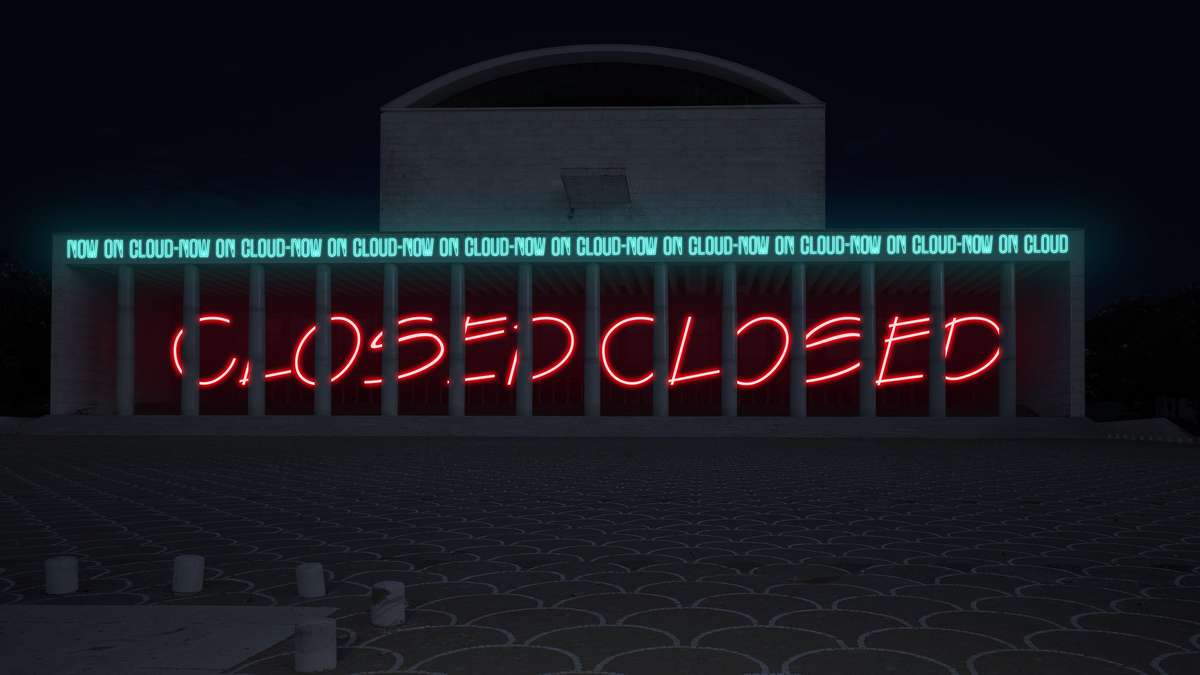
The project for the new Congress Center in EUR (the "cloud"), which obscures and leaves the previous Palazzo dei Congressi of Libera in the background, now deprived of its original urban role and identity.
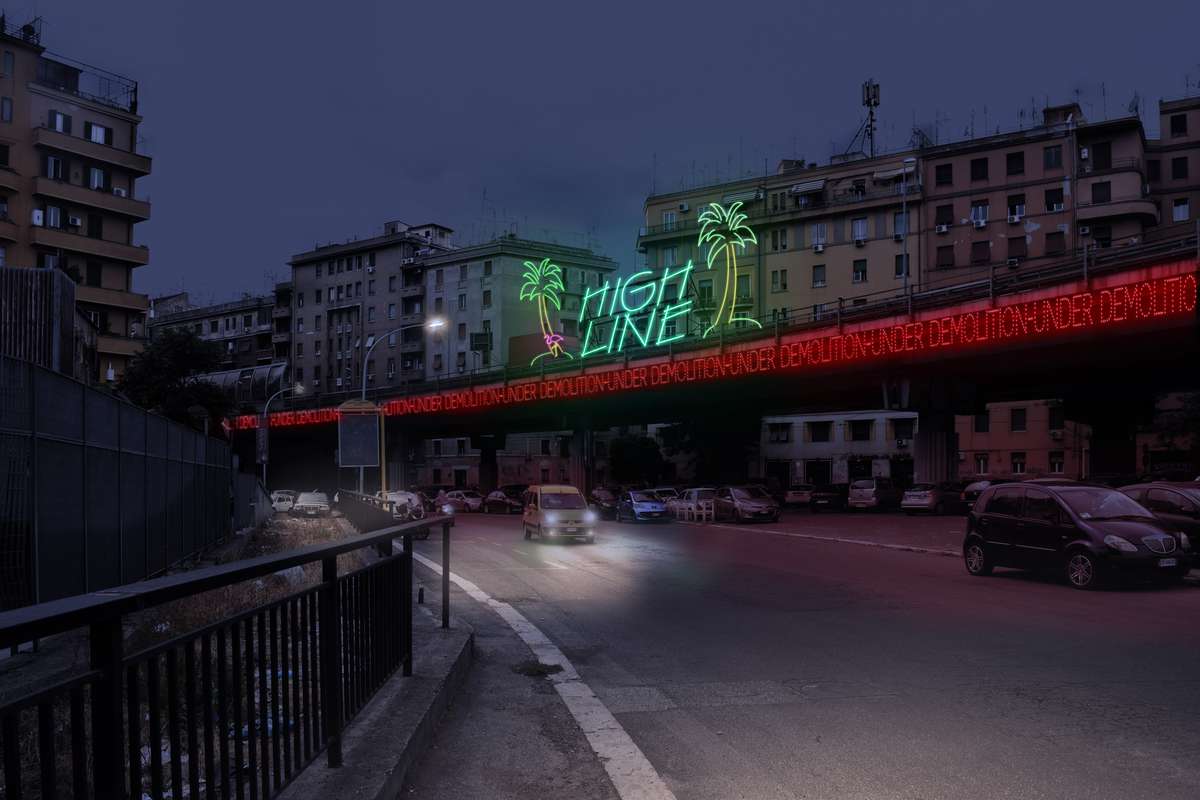
The "elevated" part of the Eastern ring road which, on the border between abominable infrastructure and fascinating urban connector, will soon cease to exist. Although there are infinite projects for the recovery and reuse of the overpass that would put it at the service of citizens and no longer of cars, it is decided to conclude its existence by provoking a tangible change on the one hand, but on the other an unexplored and unexpressed potential.
Neon Rome
Neon Rome

- Systemic changes
Neon Rome puts the eternal city into a state between the real and the surreal. It is a graphic research project that focuses on the potential of Rome as a city that hides continuous transformations behind its mask of perennial immutability. The aesthetic of neon gives it an alienic character, which refers to an era and context that never existed in Rome and which therefore proves to be the suitable means to reveal what is invisibly hidden behind the unalterable facade of the eternal city.
The glowing signs highlight the relationship between the politics of the city and its architecture, no matter how monumental and nodal it could be. The neon represent the invisible contemporaneity of people that affects the entire perception of architecture and its role in the urban environment.
Neon Rome therefore plays with the paradox of transformation of the alleged immutability of monumental architecture in order to reveal the hidden and still intangible change behind the events taking place.

Rome, which has always been transformed with its traditional "slowness" continues to do so inexorably, and with the same inexorability continues to stimulate the population to interact with it. So here's how, in 2007 and 2017, the Trevi fountain, in an act of rebellion and madness, is tinged with red by a vandal. The fountain, given its status as a monument, stands as a symbol of the city and becomes a catalyst, radically transforming into a means of protest and communication.
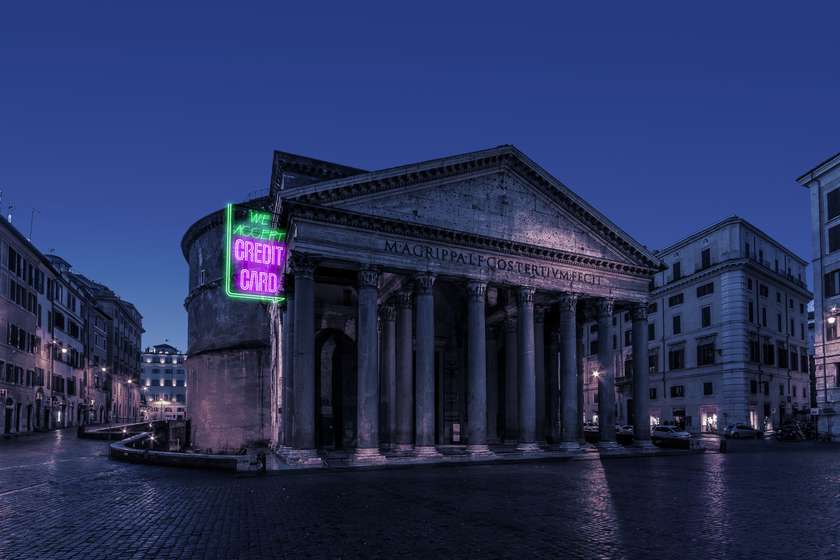
Another example of its changeable immutability was the desire to introduce a fee for the entrance of the Pantheon. This decision undermines what has defined Rome in the last 1500 years of its history. The sacredness of being the Catholic beacon of the world and therefore a place where the creed shows itself freely (and free of charge) to all pilgrims, reveals its business component.

In Rome, change and transformation must be placed in a difficult context, between illustrious pre-existences and questionable needs that weaken its effective impact. A situation which, in a wider context, makes evolution difficult: this is demonstrated by the project of the City of Sport of Calatrava, which has remained unfinished, abandoned and disconnected from the rest of the city, causing a desolate atmosphere worthy of the deserts in the Roman suburbs.
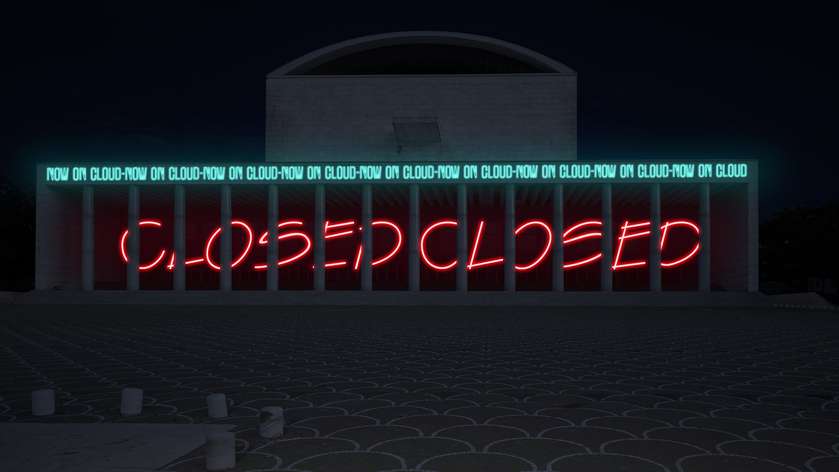
The project for the new Congress Center in EUR (the "cloud"), which obscures and leaves the previous Palazzo dei Congressi of Libera in the background, now deprived of its original urban role and identity.

The "elevated" part of the Eastern ring road which, on the border between abominable infrastructure and fascinating urban connector, will soon cease to exist. Although there are infinite projects for the recovery and reuse of the overpass that would put it at the service of citizens and no longer of cars, it is decided to conclude its existence by provoking a tangible change on the one hand, but on the other an unexplored and unexpressed potential.